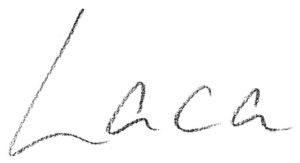
Walter Benjamin, oil on linen, 48"X42", 2020
Behind the Scene: Aborting a Portrait Commission
Today, I feel like shit. I learned yesterday that the portrait of Walter Benjamin I’ve been painting is being refused by the people who commissioned it.
More...
I usually don’t share these rare negative experiences but maybe it could be instructive to some and hopefully it will prevent future disappointments.
A few months back, a nice couple contacted me with an overwhelming enthusiasm for my work.
They wanted me to paint a portrait of one of their two favorite philosophers, namely Hannah Arendt or Walter Benjamin. I thought they were interesting subjects very much inside what I’m used to paint. No worries, I could pull that off.
I was more tempted to paint Arendt since I painted a lot more men in the past. They came to visit me in my studio to talk about it and a few days later they settled for Benjamin. They transferred me the first half of the payment (this is my condition to accept commissions and is mainly to assure that people are serious).
After that, I researched images of Walter Benjamin to use as reference material for the portrait. I found two that were interesting for me in terms of expression and light and dark contrast. One was a serious looking and rather conventional photo — although perfectly fine to paint from, since it’s the painting that would have made it interesting.


Which reference would you choose?
The other was less conventional. Benjamin’s head was tilted, giving him a much warmer and almost playful look. I offered them to either paint a vertical portrait from the first photo or a horizontal one from the second. In the horizontal one, I could paint the portrait off-centered and dissolving in horizontal abstract paint splatters. This is something I successfully did on several portraits. It’s very dynamic and gives the portrait a radically contemporary twist.
They came back to me saying that they wanted me to use the second image but in a vertical size. This meant that I couldn’t do the abstract dissolution.
I was nevertheless eager to start painting. I had the idea of doing something interesting with Benjamin’s head. He wore these very round glasses. I recently painted a portrait of Vincent Van Gogh where everything is yellow or brown except the very striking blue of his irises.
It gives the impression that he has a vision, that he gazes into a different world. I wanted to convey a variation of this visual idea in Benjamin’s portrait. This philosopher had a unique perspective on history. He saw things differently. So, I thought of painting a striking green inside his glasses, as if they were holes into a totally different reality.
I sent process pictures of the portrait to the couple. “(…) This is wonderful! Thank you so much. We saw it and love it. And are excitedly (and patiently) awaiting with excitement and curiosity.”
At that point, all I had to do left was to polish the face a little, paint the background and throw a bit of paint to add movement and liveliness. So, I did it and sent another picture. I was shocked to discover that my portrait was not at all in line with what they expected. They wrote me a very long message telling me how tragic Benjamin’s life was and consequently how darker my portrait must be.
To be frank, I didn’t know how to react.
It was totally unexpected.

In my mind, I juggled the idea of painting a dark color in the background. But then I would probably have to rework the entire portrait itself and lose what I like about it.
I really dig the subtle brushstrokes in the light background and how it enlightens at the top like in my first portrait of Frida Kahlo. When they visited me, they had told me that they like my dark paintings more, I remember. But when I paint, I take all sorts of instinctive decisions. In this case, my decisions were mainly triggered by the green glasses. Their initial preference just slipped my mind.
When I paint, there is only one true god in charge: me.
This morning, I refunded their deposit. I’m not able to destroy parts of a piece I like. But more importantly, I’m not able to let people decide how I should paint, however nice these people might be. When I portray someone, I add a piece of myself in the process along with my vision of the person. And this piece is not negotiable.
It’s what makes the difference between an artist and an artisan.
Something you can’t compromise with. In my opinion, there’s no point in paying an artist a lot of money if you don’t want that specific thing that no one can command.
In this case, how could I bend while painting the portrait of Walter Benjamin, a man who wrote:
“No poem is intended for the reader, no picture for the beholder,
no symphony for the listener.”*
*Benjamin, Walter. Illuminations: Essays and Reflections. New York: Schocken, 1969.

P.S. - Want to be the first to know about my latest works? Click here and I will keep you up to date in Messenger.

